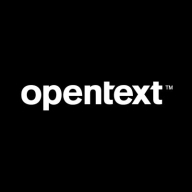

OpenText Core Application Security and GitHub are key players in application security and code management. OpenText leads with its comprehensive application security features, while GitHub stands out in version control and developer collaboration.
Features: OpenText offers manual expert reviews, tailored vulnerability detection, and effective compliance. GitHub provides robust version control, supports a wide range of DevOps tools, and facilitates collaborative code management.
Room for Improvement: OpenText could enhance its incident management integration, reduce false positives, and improve reporting visualization for executives. GitHub could expand its security features, improve automation tool integration, and streamline merging processes.
Ease of Deployment and Customer Service: OpenText supports on-premises, cloud, and hybrid deployments but experiences varied customer service. GitHub is primarily cloud-based with strong community support, though initial setup guidance needs improvement.
Pricing and ROI: OpenText is seen as expensive but justified by its security features. GitHub offers flexible pricing with free and paid tiers, though managing user licenses can incur hidden costs.
| Product | Market Share (%) |
|---|---|
| GitHub | 0.9% |
| OpenText Core Application Security | 3.6% |
| Other | 95.5% |


| Company Size | Count |
|---|---|
| Small Business | 42 |
| Midsize Enterprise | 12 |
| Large Enterprise | 48 |
| Company Size | Count |
|---|---|
| Small Business | 16 |
| Midsize Enterprise | 8 |
| Large Enterprise | 43 |
GitHub is a web-based Git repository hosting service. It offers all of the distributed revision control and source code management (SCM) functionality of Git as well as adding its own features. Unlike Git, which is strictly a command-line tool, GitHub provides a Web-based graphical interface and desktop as well as mobile integration. It also provides access control and several collaboration features such as bug tracking, feature requests, task management, and wikis for every project.
OpenText Core Application Security offers robust features like static and dynamic scanning, real-time vulnerability tracking, and seamless integration with development platforms, designed to enhance code security and reduce operational costs.
OpenText Core Application Security is a cloud-based, on-demand service providing accurate and deep scanning capabilities with detailed reporting. Its integrations with development platforms ensure an enhanced security layer in the development lifecycle, benefiting users by lowering operational costs and facilitating efficient remediation. The platform addresses needs for intuitive interfaces, API support, and comprehensive vulnerability assessments, helping improve code security and accelerate time-to-market. Despite its strengths, challenges exist around false positives, report clarity, and language support, alongside confusing pricing and package options. Enhancements are sought in areas like CI/CD pipeline configuration, report visualization, scan times, and integration with third-party tools such as GitLab, container scanning, and software composition analysis.
What features define OpenText Core Application Security?Industries like mobile applications, e-commerce, and banking leverage OpenText Core Application Security for its ability to identify vulnerabilities such as SQL injections. Integrating seamlessly with DevSecOps and security auditing processes, this tool supports developers in writing safer code, ensuring secure application deployment and enhancing software assurance.
We monitor all Application Security Tools reviews to prevent fraudulent reviews and keep review quality high. We do not post reviews by company employees or direct competitors. We validate each review for authenticity via cross-reference with LinkedIn, and personal follow-up with the reviewer when necessary.